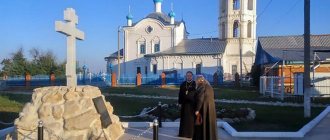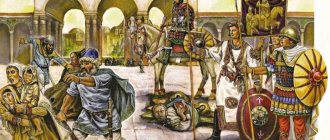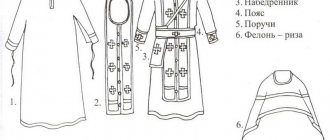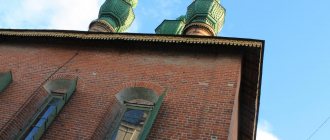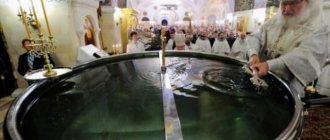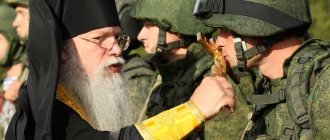Myths about church ministers
If you believe popular rumor, the clergy, despite their apparent infallibility, has a number of negative qualities:
- Lack of physical labor. The specificity of the work of clergy is such that they rarely have to shoulder the heavy burden of working with their hands;
- According to Hieromonk Oleg Osipov, the laity attribute excessive sleep time to the clergy. Allegedly, they spend most of the day in the arms of Morpheus, freed from the need to earn their daily bread;
- Gluttony. Priests at all times in Rus' were quite well-fed people. In ancient times, there was a custom to roll the owner of a large belly across the field to wish for a large harvest.
The last myth is the most common, so it is worth debunking it first.
The effect of fasting on the body
Abstinence in food is an integral part of the life of religiously minded people. However, any violation of the normal diet can play a disservice to the body:
- Orthodox Christians must carefully observe several multi-day fasts every year. In addition, the third and fifth days of each week are also fast;
- After many years, the body gets used to a carbohydrate diet (fruits, vegetables, pasta, etc.);
- Since carbohydrates are a source of energy, it should be spent wisely. Not every priest goes in for sports, which affects his figure;
- The lack of fats makes itself felt at the end of fasting, when the body, hungry for them, begins to intensively store them;
- The specific diet also matters. Breakfast for a clergyman is practically excluded, since eating food is prohibited until the end of the morning service. A large number of worries during the day also does not encourage a hearty lunch. Thus, a tradition has developed of overeating at night, which is very harmful.
Are all priests fat because they eat a lot?>
Estimated reading time: less than a minute.
...all priests are fat because they eat a lot. And it is no coincidence that the phrase “pot-bellied priest” has been popular among people for a long time.
The broader the generalization, the more incorrect it is. Among priests, the ratio of fat to thin is approximately the same as among all other middle-aged and elderly men.
...the domes of Orthodox churches are covered with a thick layer of gold. It’s some kind of senseless waste to cover temples with precious metal for the sake of tradition, when today many materials have been invented that are similar to gold, but much less expensive.
It's not true about the thick layer. Traditionally, domes are actually gilded. But very thin foil with a thickness of only 0.00001 mm is used for this. And today, instead of gold, stainless steel coated with titanium nitride is often used to cover domes.
...church canons prohibit women from wearing trousers. However, women all over the world have been wearing them for a long time; they have become a traditional item of women's wardrobe. And only the Orthodox, guided by the canons of thousands of years ago, deny women the right to wear this comfortable and practical clothing.
There is not a word about trousers in any of the church canons. There is a strict prohibition on wearing clothes traditionally belonging to the other sex. But here we are not talking about the wardrobe itself, but about the sexual positioning of a person who demonstrates his orientation through certain items of clothing. This is exactly what the Bible says: A woman must not wear men’s clothing, and a man must not put on a woman’s clothing, for anyone who does these things is an abomination to the Lord your God (Deut. 22:5).
...The Church teaches that getting married without a wedding is a sin, and all unmarried couples actually live not in marriage, but in adulterous cohabitation. And children who are born in such cohabitation are illegitimate. And in general, an unmarried marriage, from the point of view of the Church, is an abomination before God.
From the point of view of the Church, any marriage registered by society or the state is not a sin, but a fulfillment of God’s blessing. A wedding is a church sacrament that is performed only on members of the Church entering into marriage. The social concept of the Russian Orthodox Church directly states that the Church respects civil marriage (not to be confused with cohabitation), registered with state authorities.
...the Jews crucified Christ, and in general they are the most “anti-Christian” people on Earth.
Actually, Christ was crucified by Roman soldiers. But it was indeed the Jewish high priests who handed Him over to be crucified. But all the apostles, the myrrh-bearing women, and the Most Holy Theotokos were also Jews.
...candles in the temple are a superstition. After all, God does not need stearine sticks with a wick inside. And only very naive and narrow-minded people can ask the Creator of the world for all sorts of blessings in exchange for the products of a candle factory.
Candles in the church are our contribution to church life. Previously, Christians brought with them bread, wine and oil necessary for worship. Now bread, wine, oil for lamps, vestments for priests, decorations for the temple and all other religious accessories are bought with the money that we donate to the temple. And the candle is only a visible sign of this sacrifice.
Age and individual characteristics
Other factors may also be to blame for the formation of a large belly:
- Features of the male body. If a woman, when gaining weight, gains excessively voluminous hips, then a man risks becoming the owner of a majestic mammon;
- A significant portion of clerics are constitutionally mesomorphic, i.e., they are prone to gaining a fuller figure with age. This is an innate trait that cannot be changed even with constant exercise;
- After 40 years, there is a significant risk of getting hyperlordosis - this is a disease of the spine in which there is a significant forward deflection of the lower back. Those suffering from this disease are visually perceived as fat people, although they may not be overweight;
- The specific attire of Orthodox clergy only emphasizes the flaws of the figure, and does not hide them;
- Sexual abstinence also makes its contribution during fasting and holidays;
- As we age, metabolic processes in the body are disrupted. Every ten years, a mature person’s metabolism drops by 7-8%.
Oh those butts...
“Washing” the priest’s “bones” has become a kind of “folk pastime.” Show business stars and politicians are already fed up, but the process of making fun of priests has not yet set such teeth on edge. You don’t need to be a seer or clairvoyant to understand: priests are not Angels and did not descend from Heaven. They do not feed on fluids, but on the same food as all other people, which is why eating disorders, like others, also happen to them. I will not reveal a big secret if I say that priests also have vices. Perhaps the sin most clearly related to our topic is depicted in Vasily Perov’s painting “Tea Party in Mytishchi, near Moscow.” Anyone who has not seen this work can now take a quick look at it, start pointing their finger and lamenting: “Look, how the priests eat the people, this is even reflected in Russian painting.” I don’t know about anyone, but this does not shake either my faith or the authority of those clergy whom I trust.
If you ask, not even a skeptic, but a person with an eternally resisting, eternally dissatisfied and shattered mind: “Why are priests fat?” - then he will most likely immediately blurt out: “Because they cheat people out of money and always overeat from their satiated life.” I would advise lovers of such tales to take a drive through rural parishes and look hard for wealthy priests with a potbelly. If you find any, you can safely add them to the Red Book. There are practically no frankly fat priests now (they are no more common than people with considerable excess weight in general), and if a man by the age of 50-60 has a belly, especially considering that he does not specifically engage in sports, and does not always observe eating regimen, then there is no crime in this. If you wanted, you could just as well say that, for example, minibus drivers are fat - after all, they also collect money from people, and obviously more than is needed to live and maintain the bus. “Oh, these wealthy minibus drivers, but they themselves only pretend to be poor.”
Occupational diseases of clergy
Almost any job has some negative impact on health. The service of the Church is no exception. Many years after ordination, the following illnesses make themselves known:
- Diabetes. Fasts that are important for the humility of a believer can lead to such an incurable illness;
- Thyroid gland dysfunction. The reason for this is hormonal imbalances and age-related decline in metabolism;
- Cardiovascular diseases;
- Phlebeurysm. The specificity of a number of church rituals is such that it is necessary to stand on your feet for hours;
- Both women and men in office suffer from ailments of the reproductive organs;
- Impact of stress. Clergy communicate not only with the Lord through prayers, but also with ordinary sinners. The consequences of such communication can have a very negative role;
- Diseases of the gastrointestinal tract. Eating irregularly during the day leads to the corrosion of the stomach walls by acid. Which in turn causes gastritis or ulcers.
Popular Russian humorist Mikhail Zadornov once wondered why priests have big bellies when they have to observe strict fasts. According to the Soviet comedian, giving up fatty foods several times a year should lead to a model figure. In reality, the situation is exactly the opposite: religious prohibitions regarding food only lead to excess weight gain.
What about fasting?
Someone might say that the Orthodox fast for more than half the days of the year, and that they can only get fat if they hypocritically fast in public and secretly overeat on meat and lard at home. But that’s the problem: it’s very easy to gain excess weight during fasting. Yes, we, modern Orthodox Christians, came to the Church from this world, were and remain part of it, we have really lost the tradition when fasting for Christians meant eating a minimum amount of plant food, and only after sunset. In today's worries, it happens that you run around, work hard all day, come home tired and hungry and ready to eat a whole wild boar, but no, fasting. So it turns out that we compensate for the lack of meat and dairy products by eating more cereals, potatoes and bread - and this is a direct path to gaining extra pounds. But in this regard, priests are not anything special. Compliance with fasting with proper and regular nutrition does not depend on the rank, but personally on each individual person.
Based on all that has been said, if someone now asks a question like: “Why are priests fat?” or: “Why do priests have big bellies?” - I would answer: “I don’t know where you got this from. There are no more overweight priests than there are simply such people in the society around us.” And in general, it seems to me that discussing and grinding on such topics is somehow low. Is there nothing else to talk about? How envious or a hater do you have to be to judge the size of another person’s belly!
Archpriest Vladimir Dolgikh


